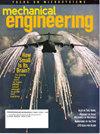燃气轮机热效率研究
IF 2.1
4区 工程技术
Q2 ENGINEERING, MECHANICAL
引用次数: 3
摘要
在热机家族中,燃气轮机的独特之处在于它被用来产生两种不同的有用动力。通过将燃烧的燃料热量转化为功,燃气涡轮发动机可以产生外部轴动力(例如,驱动连接的发电机)或喷气动力(例如,作为喷气发动机,产生推力以推动飞机)。这意味着燃气轮机的热力学指标,热效率,是多方面的,需要细致入微的检查。本文章由计算机程序翻译,如有差异,请以英文原文为准。
Aspects of Gas Turbine Thermal Efficiency
In the family of heat engines, the gas turbine is unique in that it is used to produce two different kinds of useful power. By converting combusted fuel heat into work, a gas turbine engine can produce external shaft power (e.g., to drive a connected electric generator) or jet power (e.g., as a jet engine, to produce thrust forces to propel an aircraft). This means that the gas turbine’s thermodynamic figure of merit, thermal efficiency, is multifaceted, and calls for a nuanced examination.
求助全文
通过发布文献求助,成功后即可免费获取论文全文。
去求助
来源期刊

Mechanical Engineering
工程技术-工程:机械
CiteScore
0.60
自引率
0.00%
发文量
21
审稿时长
6-12 weeks
期刊介绍:
Information not localized
 求助内容:
求助内容: 应助结果提醒方式:
应助结果提醒方式:


